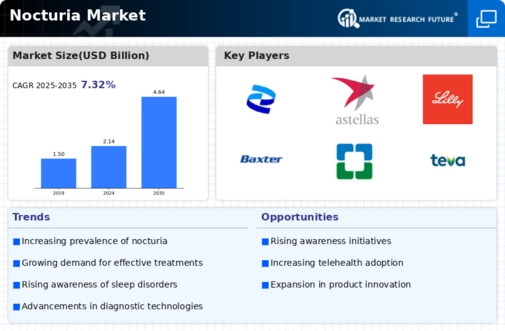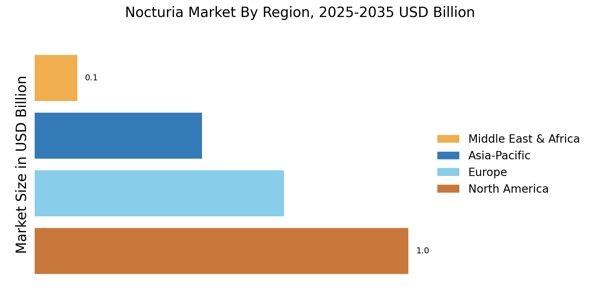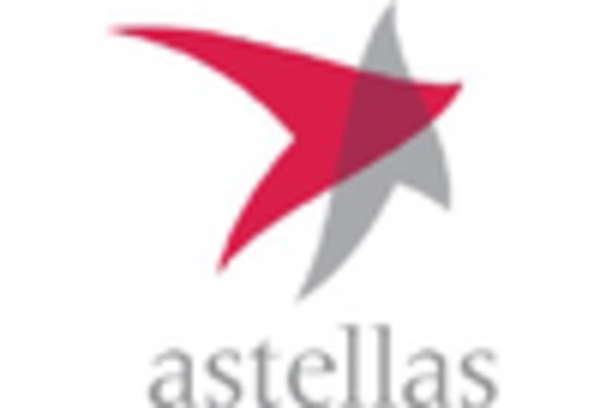Growing Geriatric Population
The growing geriatric population is a substantial driver of the Nocturia Market. As life expectancy increases, the number of elderly individuals is projected to rise significantly, leading to a higher prevalence of nocturia among this demographic. Older adults are more susceptible to various health conditions that contribute to nocturia, such as diabetes and prostate disorders. This demographic shift is likely to create a larger patient base seeking effective treatments for nocturia. Consequently, pharmaceutical companies and healthcare providers are expected to focus on developing targeted therapies and management strategies tailored to the needs of older adults, thereby driving market growth.
Rising Healthcare Expenditure
Rising healthcare expenditure is another critical driver impacting the Nocturia Market. As countries allocate more resources to healthcare, there is an increased focus on addressing chronic conditions, including nocturia. Higher spending on healthcare services allows for better access to diagnostic tools, treatment options, and patient education. This trend is particularly evident in regions where healthcare systems are evolving to meet the needs of aging populations. As patients become more willing to invest in their health, the demand for effective nocturia treatments is likely to rise, further propelling market growth. The emphasis on improving quality of life for individuals suffering from nocturia will continue to shape the industry.
Rising Prevalence of Nocturia
The increasing prevalence of nocturia is a primary driver in the Nocturia Market. Studies indicate that approximately 50% of adults aged 50 and older experience nocturia, which significantly impacts their quality of life. This condition is often underreported, leading to a growing awareness among healthcare providers and patients alike. As the population ages, the incidence of nocturia is expected to rise, thereby expanding the market for treatment options. The demand for effective management strategies is likely to increase, prompting pharmaceutical companies to invest in research and development. Consequently, the nocturia market is projected to witness substantial growth as more individuals seek solutions to alleviate their symptoms.
Increased Awareness and Diagnosis
There is a notable increase in awareness regarding nocturia, which serves as a crucial driver for the Nocturia Market. Healthcare professionals are becoming more adept at recognizing the symptoms associated with nocturia, leading to improved diagnosis rates. This heightened awareness is partly due to educational campaigns and the dissemination of information through various media channels. As a result, more patients are seeking medical advice for their nocturia symptoms, which in turn drives demand for treatment options. The market is likely to expand as diagnostic tools and therapies become more accessible, allowing for timely intervention and management of the condition.
Technological Innovations in Treatment
Technological advancements in treatment options are significantly influencing the Nocturia Market. Innovations such as minimally invasive surgical techniques and novel pharmacological therapies are emerging, providing patients with more effective and less invasive solutions. For instance, the development of new medications targeting the underlying causes of nocturia has shown promising results in clinical trials. These advancements not only enhance patient outcomes but also stimulate market growth as healthcare providers adopt these new technologies. The integration of telemedicine and digital health solutions further supports patient management, making it easier for individuals to access care and adhere to treatment regimens.


















Leave a Comment